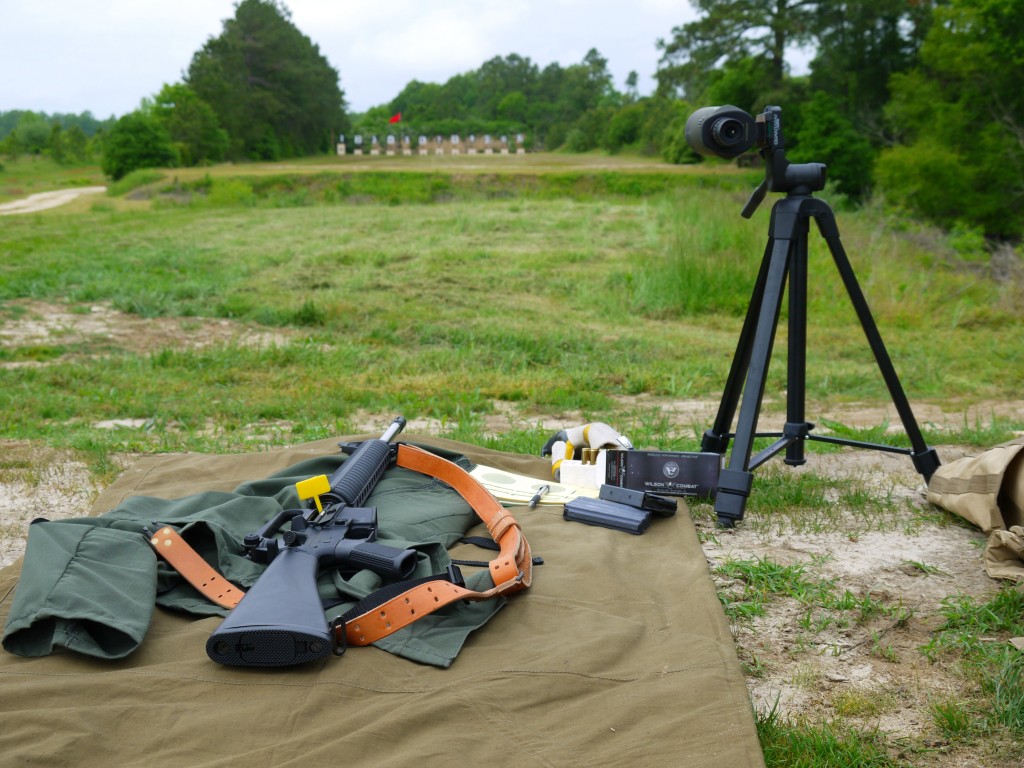 Everyone has an “off” day, where you just can’t catch a break no matter how hard you try. Yesterday was one of those days. It just happened to be the first regional competition of the season for me. I traveled to Bridgeville, Delaware for a high power rifle competition, using the recently reviewed rifle provided by Armalite and ammunition provided by Wilson Combat. And despite all of the failures, I still posted a pretty damn impressive score. Let’s take a peek at how horribly it went . . .
Everyone has an “off” day, where you just can’t catch a break no matter how hard you try. Yesterday was one of those days. It just happened to be the first regional competition of the season for me. I traveled to Bridgeville, Delaware for a high power rifle competition, using the recently reviewed rifle provided by Armalite and ammunition provided by Wilson Combat. And despite all of the failures, I still posted a pretty damn impressive score. Let’s take a peek at how horribly it went . . .
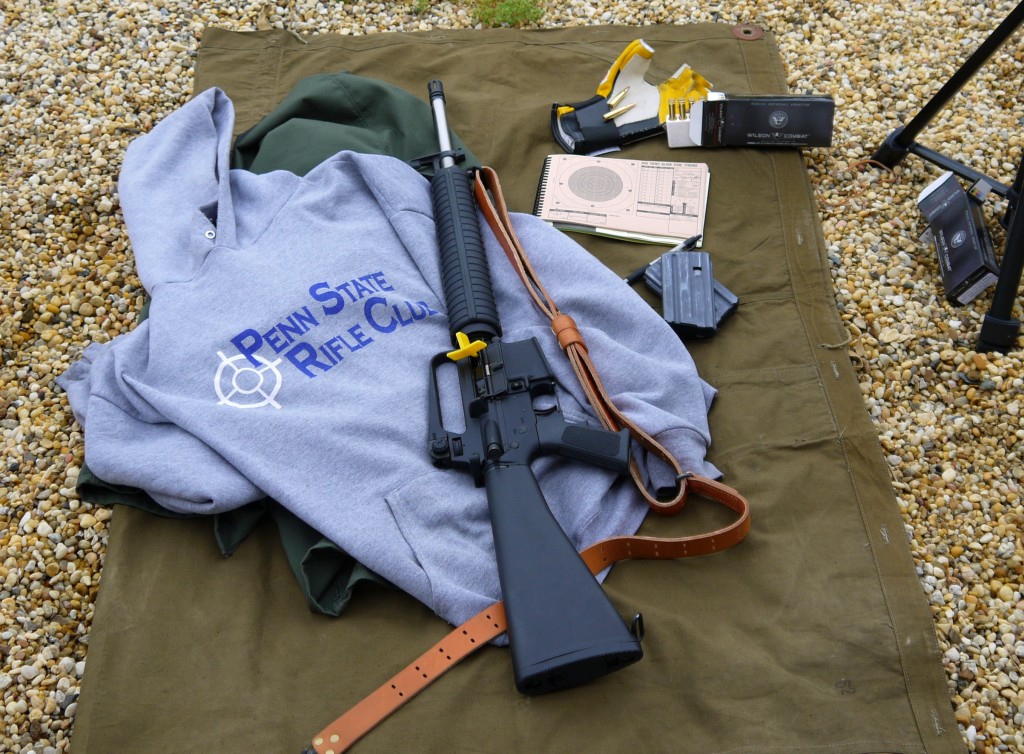 The day began just fine. For once I had actually remembered all of the gear I needed to compete, so I wasn’t reliant on the kindness of strangers for a spotting scope. I was feeling good going into the first relay. That changed pretty quick.
The day began just fine. For once I had actually remembered all of the gear I needed to compete, so I wasn’t reliant on the kindness of strangers for a spotting scope. I was feeling good going into the first relay. That changed pretty quick.
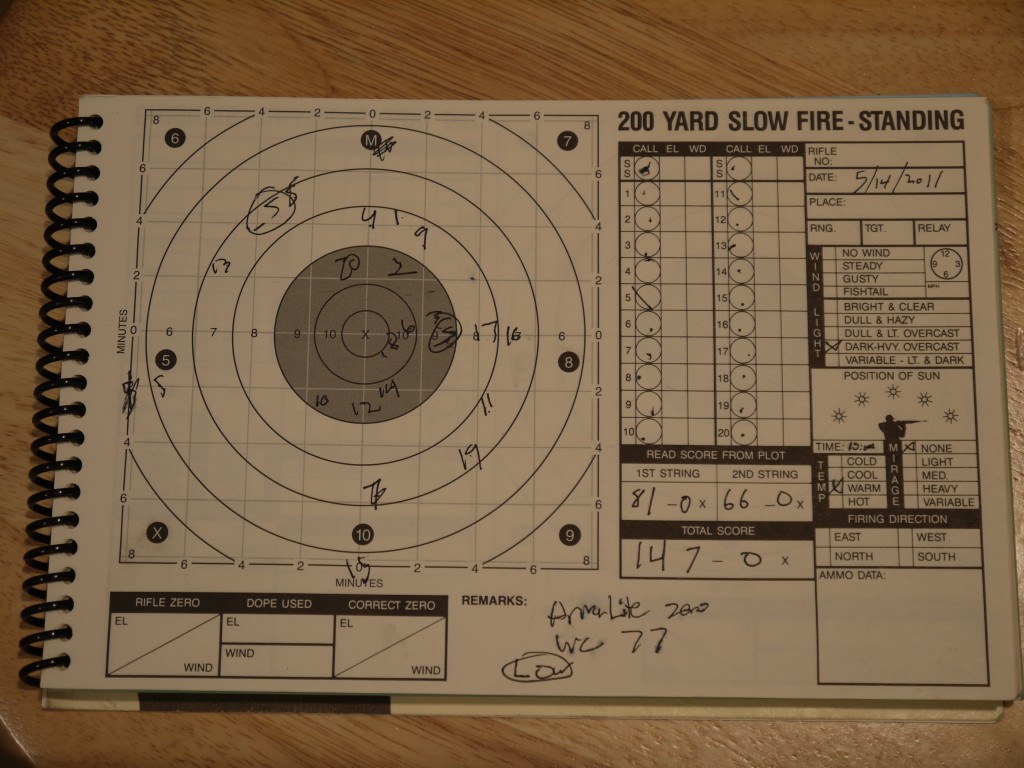 These are the pages from my logbook for today. Every shot I took is recorded here. The target outline on the left has a number of notations on it. The notes marked “S” are sighters (didn’t count for score), and the shots that counted for my score are indicated by the numbers. They’re sequential, so shot number 7 is indicated as the number 7 on the target and so on. The circles with dots in them to the right indicate where I thought the shot went before I ever saw the target, trying to get better at “calling” shots.
These are the pages from my logbook for today. Every shot I took is recorded here. The target outline on the left has a number of notations on it. The notes marked “S” are sighters (didn’t count for score), and the shots that counted for my score are indicated by the numbers. They’re sequential, so shot number 7 is indicated as the number 7 on the target and so on. The circles with dots in them to the right indicate where I thought the shot went before I ever saw the target, trying to get better at “calling” shots.
Normally, I keep the ammunition for the standing stage in the pocket of my shooting jacket. It keeps it handy. Unfortunately, this time, all of the ammo decided to jump out of that pocket and land on the wet sandy ground. Which means I had to break my position every time and re-acquire my stance and target between shots. That, tied in with my already sub-optimal standing performance, led to a rather disappointing score.
200 Yards Slow Fire, Standing – 153 – 0x
This is a little different. This is called “rapid fire,” where the shooter fires 10 rounds at a time and then it’s all scored at once. So we don’t know the order of the shots, but we know how it patterned.
This is where I really started having issues. In practice, the Armalite rifle ran like a dream. I lubed it up the night before and cleaned it well in preparation for the competition. But when I got to the rapid fire portion, I started having some mechanical problems.
The bolt on my rifle would eject the spent cartridge just fine and start to pick up the next round out of the magazine, but it would get stuck and fail to go into battery. Just about every round I had an issue, meaning that after every shot I had to break position and rack the charging handle.
You only get 60 seconds to fire your 10 rounds, and spending so many seconds fixing the rifle means that shot placement suffers. I shouldn’t have dropped a single point here, but time constraints meant that I had to sacrifice a few points to make sure I at least got 10 holes in the target each string.
200 Yards Rapid Fire, Sitting – 176 – 4x
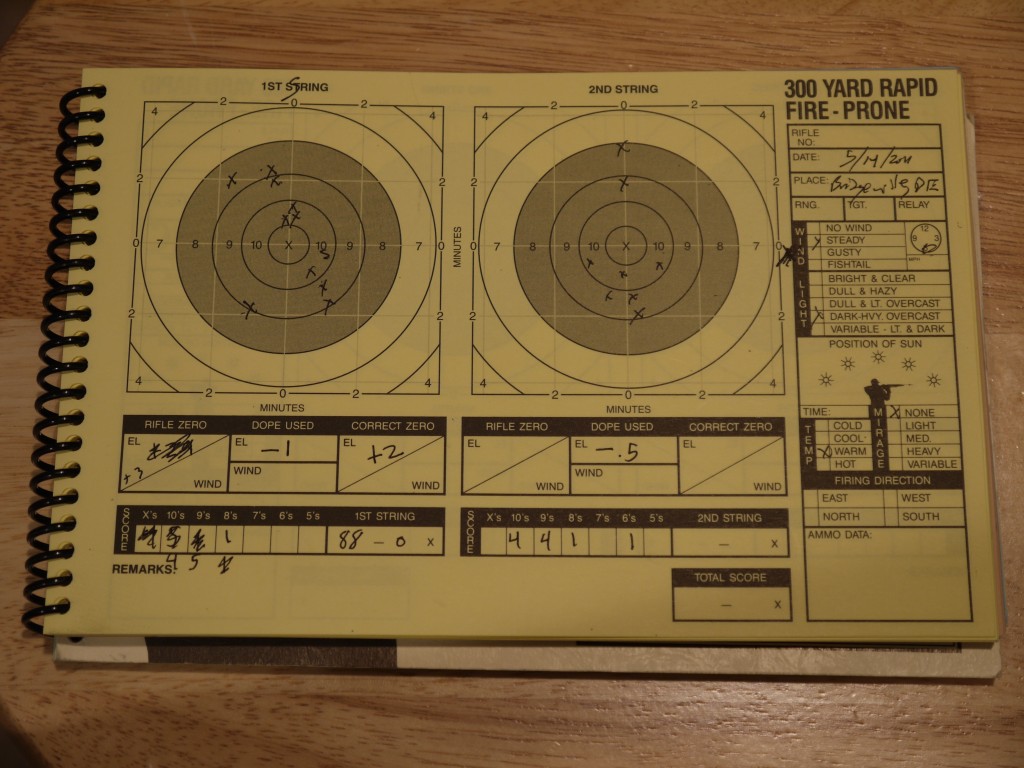 When we moved back to 300 yards, I knew what to expect. The gun was guaranteed to malfunction, and I was ready for it. The gun only malfunctioned a couple of times instead of nearly constantly (as with the 200 yard shots), so I was able to get some nicer groupings. My big dumb mistake here was changing the sights between the strings. For some reason I thought that the groups were too high, and decided to drop my point of impact. Little did I know that doing that would rob me of at least three 10 hits and a couple Xes.
When we moved back to 300 yards, I knew what to expect. The gun was guaranteed to malfunction, and I was ready for it. The gun only malfunctioned a couple of times instead of nearly constantly (as with the 200 yard shots), so I was able to get some nicer groupings. My big dumb mistake here was changing the sights between the strings. For some reason I thought that the groups were too high, and decided to drop my point of impact. Little did I know that doing that would rob me of at least three 10 hits and a couple Xes.
300 Yards Rapid Fire, Prone – 181 – 0x
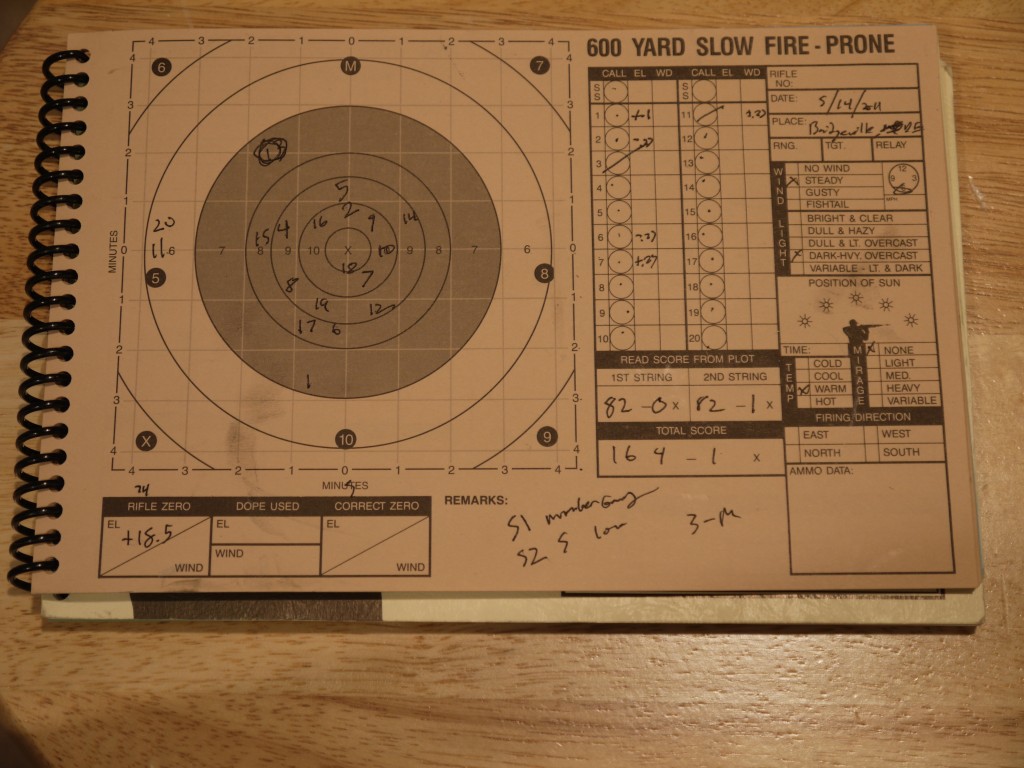
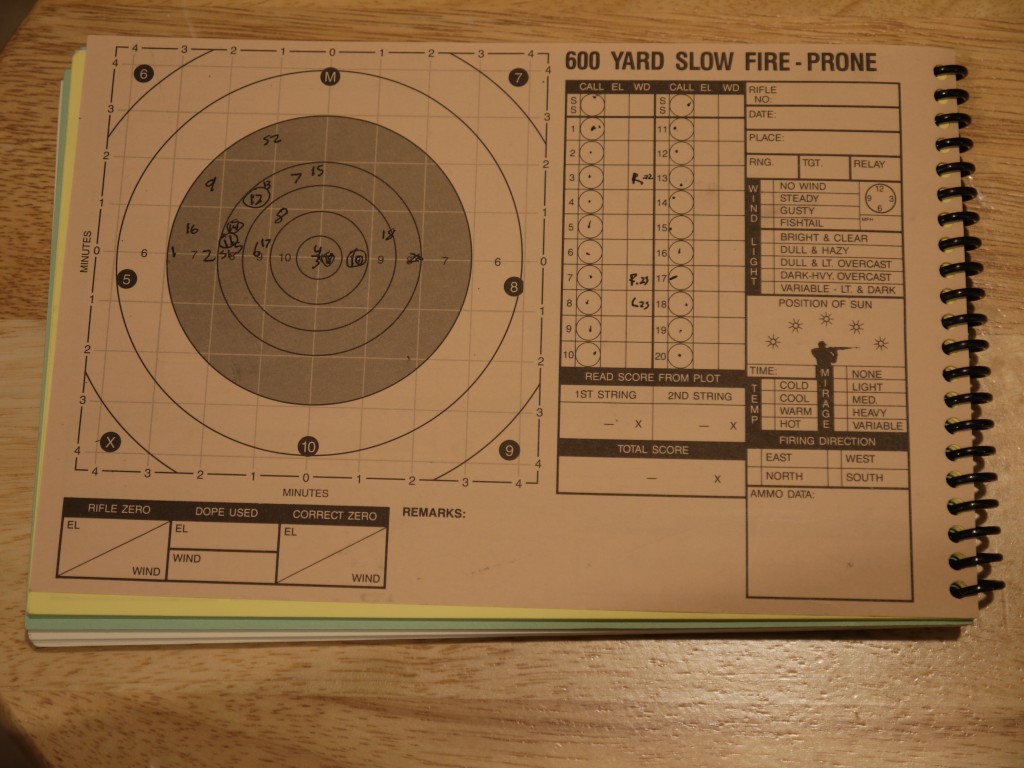 In a normal “Across the Course” match, you shoot 600 yards once. That gives you 80 total rounds for record, and a possible top score of 800. This, however, was a 1,000 point competition, meaning you get to shoot at 600 yards twice. 100 shots for record.
In a normal “Across the Course” match, you shoot 600 yards once. That gives you 80 total rounds for record, and a possible top score of 800. This, however, was a 1,000 point competition, meaning you get to shoot at 600 yards twice. 100 shots for record.
The first time I shot it was earlier in the morning. There were two “relays” shooting so we’d shoot first, then go pull targets in the pits, then shoot again later. When I shot the first target, the wind was coming from straight behind me and wasn’t shifting at all, leading to the nice and evenly distributed target you see in the first page. I was rather happy, only dropping two shots outside the black circle.
For the second target, the wind had picked up and started shifting around. It seemed like every time I went to take a shot the wind would shift just right to pull the rounds to the left. By the time I started correcting properly, I had another (BIGGER) problem.
Primers fall out of ammunition all the time, especially from “hot” loads. You fire, the primer gets kicked out of the case, it flies off somewhere and no harm is done. Every once in a blue moon, that primer will seat itself right in front of the hammer in your lower receiver making it impossible to fire the gun.
That’s exactly what happened with the last few shots of my second string. I went so far as partially disassembling the trigger right there on the line to get the primer out, hoping to be done in time to fire off my last rounds and keep my acceptable score up.
As luck would have it, a couple bashes with a rubber hammer and the primer had shifted enough to where I could at least fire my last rounds. I got off my last shot just as the targets were being pulled down.
600 Yards Slow Fire, Prone – 332 – 4x
For the day, that puts my total score at 842 – 8x (800 agg score would be 673 – 5x). If this were the National Matches that would put me a well below average, but nowhere near last place. Still not sure where I placed for the weekend. But it seems like I’m going to be in the middle of the pack. And while most of that needs to be fixed with practice, the low hanging fruit to fix is the gear.
I can’t figure out whether the issue with the rapid fire stages was a problem with the magazines or a problem with the gun. I’m going to be trying to figure that out, but I was using freshly cleaned U.S. Government type 20-rounders, same as everyone else.
The best explanation I could come up with is that the action in Armalite’s rifle either has too much friction (the bolt surface is a touch rough) or not enough spring. Quick and easy solution? Chrome bolt carrier.
This was the first match, not the last. Next weekend: The Commonwealth of Virginia games at Quantico.

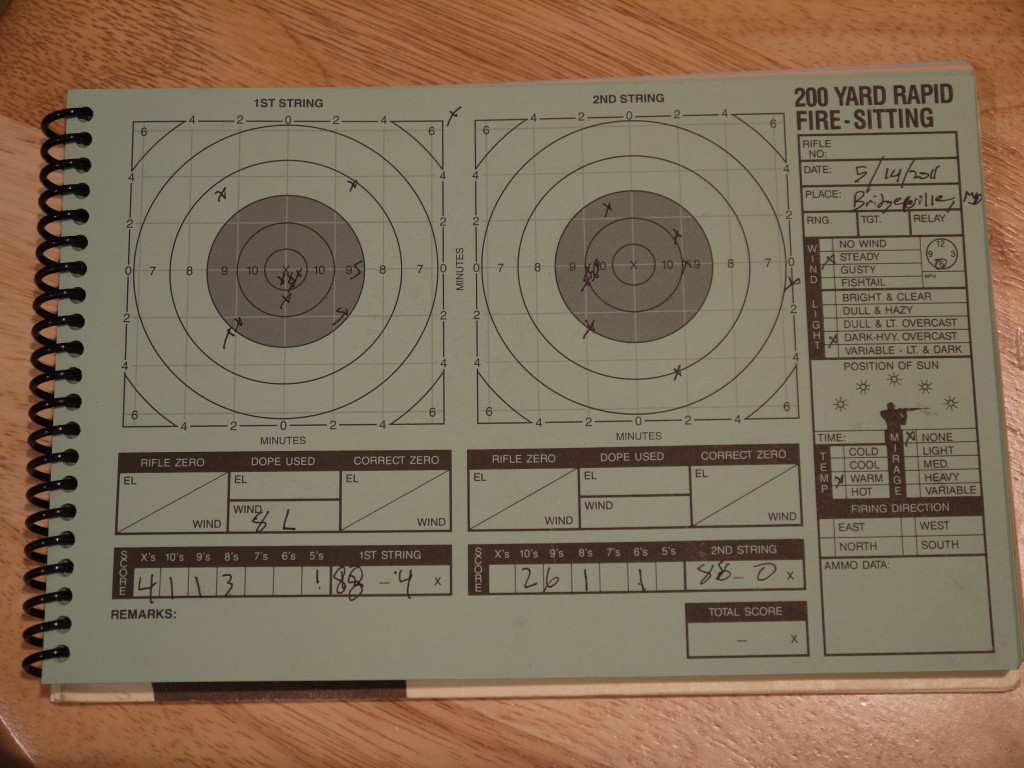

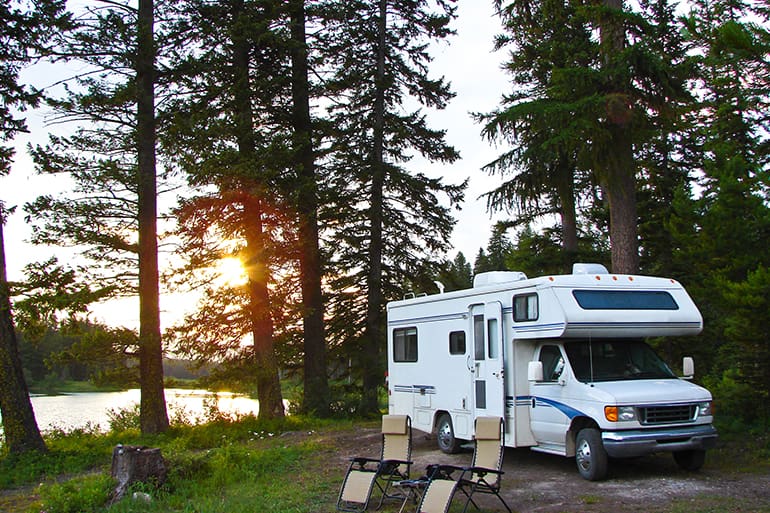

LOL! Don’t let it get you down,Brother. I once had 2 successive failures with speed loaders in the heat of a police service revolver match. I ended up doing some high speed reloading by hand. It’s how we handle duress that defines us.
If I may humbly make a few suggestions:
1. “Primers fall out of ammunition all the time, especially from “hot” loads.”
There is no reason to run hot loads in an ar-15 for an xtc match…and you shouldn’t be blowing primers. IMHO this is unsafe for you and the guy next to you on the line. If you blow a primer on old brass shame on you for being cheap and trying to squeeze out one more shot from brass that should be retired. If you blow a primer on new-ish brass, you need to back off the load before bad things happen. You are also deeming your barrel to early retirement. We all need to trust each other on the line, and I won’t shoot next to a guy that is blowing primers.
2. I looked at your link on your ammo testing. It seems to me overkill for HP. We have a 2min. 10 ring. Check a ballistics chart for your chosen bullet and load, and you will see that it takes quite a large variance in velocity to cause a lost point. I would also add that there won’t be much audience for your tests of factory ammo in the HP community, because few can afford to use factory ammo and seriously compete in HP, minimum 88 rounds a match. The good loads have all been figured out already for .223 out of a service rifle, no need to reinvent the wheel.
3. Great job keeping a positive mental attitude despite equipment failures. I’ve seen guys throw a tantrum, pack up their stuff and leave in the middle of a match because of a couple mis-feeds. Sh*t happens, just git ‘er done.
I’ve seen a lot of blown primers in my time, mostly from cheap ammo. Primers blow, it happens. It’s not unusual to be resizing some brass I picked up from the NRA range (oh how I love it when college kids magdump their ARs and then leave the brass) and come across a couple cases with the primers missing, cases which are promptly discarded.
I bring up the cheap ammo not because I was running cheap ammo for the match (Wilson Combat is far from it) but because that’s what I was running through my AR in the weeks before the match. We looked through the pile of spent brass after the match looking for a case sans primer, but there didn’t seem to be any in my pile. The best explanation we could come up with is a primer blew on some cheap ammo I was testing and hid itself somewhere in the trigger group, slowly working its way in front of my hammer. Which is still pretty crazy. I saved my brass, and I’m hoping to get to the bottom of this.
Thanks for taking the time to comment, suggestions and criticism is always welcome.
I guess I misunderstood your post as attributing the primer in your trigger group to a hot round, as opposed to a primer that fell out of tired brass. The latter is (somewhat) excusable, but the former is the result of unsafe reloading practices.
It’s sorta funny that the firearm is always the victim of the malfunction, but not always the perpetrator.
If the rifle fired fine during practice, did you ever stop to think that it might have been the ammo and not the rifle? There are some variables that also affect the ammunition and how it functions too.
Then you come right out and say that there was a problem with the primers or primer on the ammo. That right there just goes to show me that the reloading was done or procesed and that some of the other casings might not had enough powder in them to properly cycle the action all the way. Enough for extraction and ejection, but just not enough to run the BCG all the way back causing you your problem.
The ammo being used was factory loaded Wilson Combat 77gr Match ammunition. I sighted in the rifle with 20 rounds of the same ammunition the week before and had no malfunctions. This weekend the BCG was making it back to the end of the magazine just fine and started picking up the next round, every time it had an issue it looked like the BCG just didn’t have enough force to pry the round out of the magazine. I’ve had some of my handloads short stroke an AR before, and this was definitely a different issue.
There were some environmental differences between the practice and competition environments (increased humidity and rain) which also may have contributed to the issue, but first I want to definitively rule out the magazines as the cause of the issues. The ammo was good, my posture seemed fine according to the match director, and the upper seemed properly lubed, so all that leaves is the BCG, the magazines, and environmental issues.
Comments are closed.